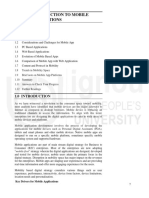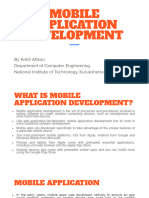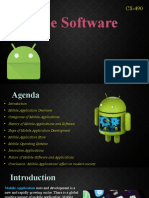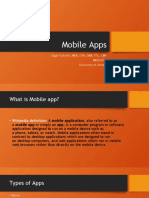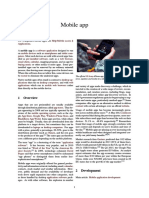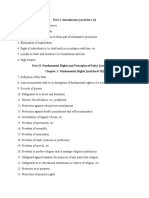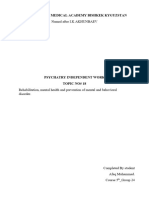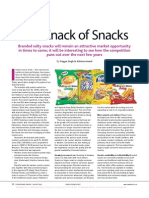0% found this document useful (0 votes)
18 views24 pagesLO 1-Introduction To Mobile Application
The document provides an overview of mobile application development, detailing the types of mobile applications, their features, and the various devices they operate on. It discusses the reasons for developing personal and business mobile applications, as well as the privacy and security issues associated with mobile devices. Additionally, it outlines key characteristics and principles for creating secure and user-friendly mobile applications.
Uploaded by
keytowtlolCopyright
© © All Rights Reserved
We take content rights seriously. If you suspect this is your content, claim it here.
Available Formats
Download as PPTX, PDF, TXT or read online on Scribd
0% found this document useful (0 votes)
18 views24 pagesLO 1-Introduction To Mobile Application
The document provides an overview of mobile application development, detailing the types of mobile applications, their features, and the various devices they operate on. It discusses the reasons for developing personal and business mobile applications, as well as the privacy and security issues associated with mobile devices. Additionally, it outlines key characteristics and principles for creating secure and user-friendly mobile applications.
Uploaded by
keytowtlolCopyright
© © All Rights Reserved
We take content rights seriously. If you suspect this is your content, claim it here.
Available Formats
Download as PPTX, PDF, TXT or read online on Scribd
/ 24







